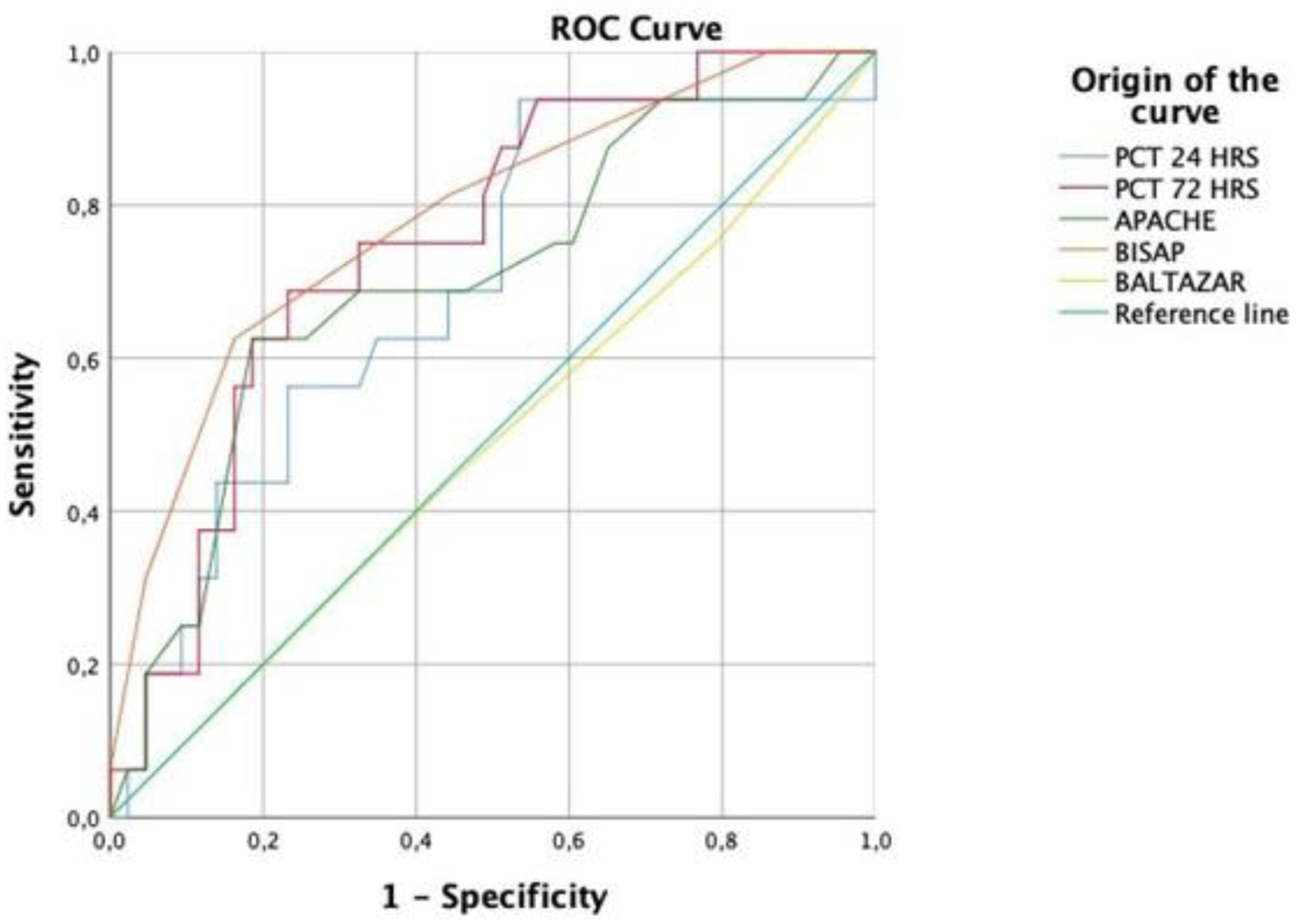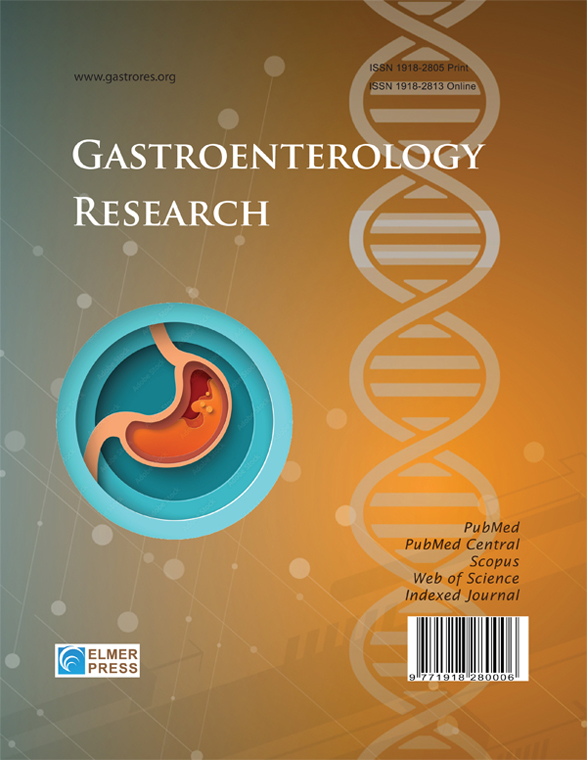Procalcitonin as a Predictor of Mortality in Patients With Severe Acute Pancreatitis
DOI:
https://doi.org/10.14740/gr2029Keywords:
Procalcitonin, Mortality, Severe acute pancreatitisAbstract
Background: Acute pancreatitis (AP) is a severe inflammatory disorder that begins with the inappropriate activation of pancreatic enzymes within acinar cells due to biliary reflux, alcohol abuse, gallstones, and autoimmune disease. Several biomarkers have been studied that may aid in the early detection of pancreatic necrosis. The aim of this project was to evaluate the usefulness of procalcitonin (PCT) in predicting mortality in patients with severe AP in Mexican population.
Methods: An observational study, including 59 patients diagnosed with AP from 2018 to 2023, was conducted in a tertiary care hospital. Serum PCT levels were assessed on the first and third days of hospitalization (24 and 72 h).
Results: A total of 59 patients were included, and the main etiologies were lithiasis (28 patients, 47.5%) and endoscopic retrograde cholangiopancreatography (ERCP) (nine patients, 15.3%). Of the total patients, 16 (27.1%) died during their hospital stay, and the main etiologies were septic shock of abdominal origin (10 patients, 62.5%) followed by extra-abdominal shock (six patients, 37.5%). The average PCT level was 4.54 ± 8.12 on the first day of hospital stay, and 5.20 ± 10.90 at 72 h. The cut-off point was 1.26 ng/mL with the best sensitivity and specificity of PCT as a predictor of mortality at 72 h of 75% and 68%, respectively (area under the curve 0.7, 95% confidence interval (CI): 0.61 - 0.88), and positive and negative predictive values of 0.46 and 0.87, respectively.
Conclusions: We propose the usefulness of PCT as a biochemical marker to predict mortality in patients with severe AP due to its accessibility in the hospital environment. We propose to carry out studies with more patients and follow-up times. In addition, it is necessary to consider other biomarkers associated with PCT to help us improve the positive predictive value of mortality in this disease.

Published
Issue
Section
License
Copyright (c) 2025 The authors

This work is licensed under a Creative Commons Attribution-NonCommercial 4.0 International License.










